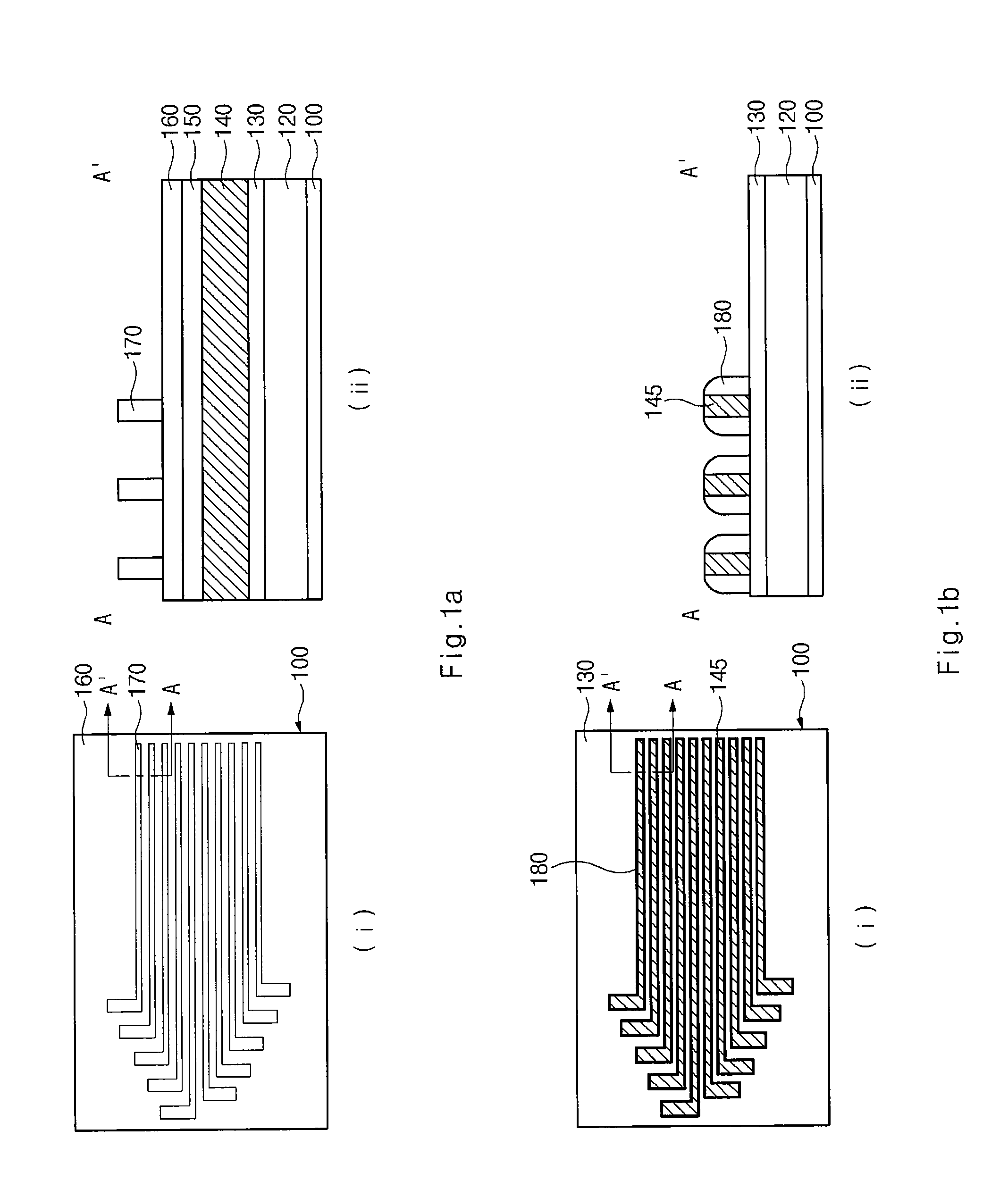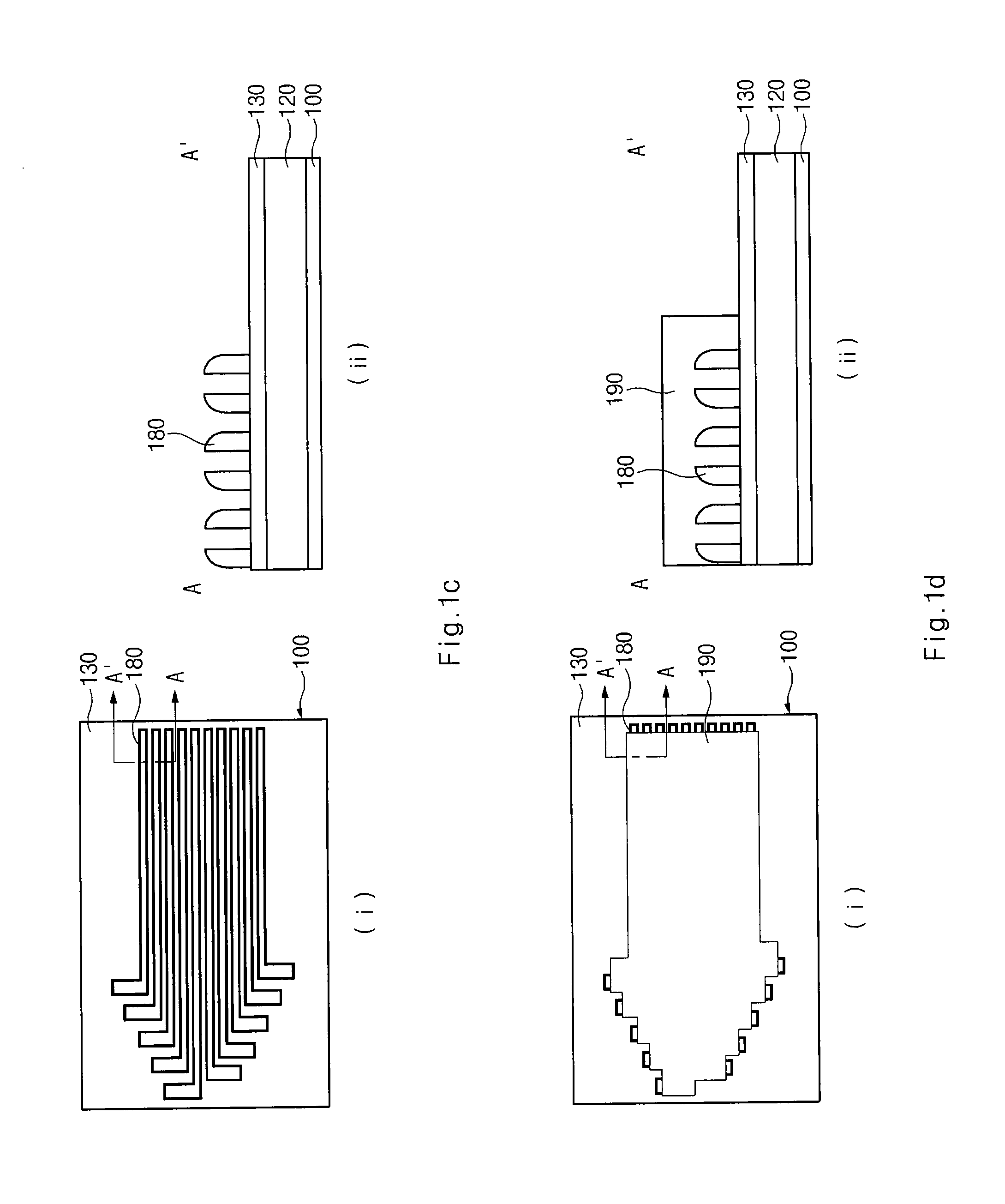Method for forming a pattern of a semiconductor device
a technology of semiconductor devices and fine patterns, which is applied in the direction of semiconductor devices, basic electric elements, electrical appliances, etc., can solve the problems of deterioration of dummy patterns, difficult to form fine patterns having a small cd, and difficulty in forming fine patterns with a short wavelength. achieve the effect of improving yield and reliability of semiconductor devices
- Summary
- Abstract
- Description
- Claims
- Application Information
AI Technical Summary
Benefits of technology
Problems solved by technology
Method used
Image
Examples
first embodiment
[0035]FIGS. 3a and 3b are cross-sectional diagrams illustrating a dummy pattern according to the present invention. FIG. 3a shows a process for forming a dummy pattern 200a that defines a pad in a peripheral circuit region after the processes of FIG. 1a to 1e are performed in the cell region.
[0036]Referring to FIG. 3a, a photoresist pattern 200a that defines a dummy pattern for a pad is formed over an etching barrier film 330 including an alignment key pattern 175a in a peripheral circuit region.
[0037]Referring to FIG. 3b, the etching barrier film 330 and a first hard mask layer 320 are etched using the alignment key pattern 175a and the photoresist pattern 200a as a mask to form a first hard mask pattern (not shown). Then a semiconductor substrate 300 is etched using the first hard mask pattern as a mask to form a dummy pattern 315 and an alignment key 325.
second embodiment
[0038]FIGS. 4a and 4b are cross-sectional diagrams illustrating a dummy pattern according to the present invention. Like FIG. 3a, FIG. 4a shows a process for forming a dummy pattern 200b that defines a pad in a peripheral circuit region after the processes of FIG. 1a to 1e are performed in the cell region.
[0039]Referring to FIG. 4a, a photoresist pattern 200b that defines a dummy pattern 415 for a pad is formed over an etching barrier film 430 including an alignment key pattern 175a in a peripheral circuit region.
[0040]Referring to FIG. 4b, the etching barrier film 430 and a first hard mask layer 420 are etched using the alignment key pattern 175a and the photoresist pattern 200b as a mask to form a first hard mask pattern (not shown) similarly to the process shown in FIG. 3b. Then a semiconductor substrate 400 is etched using the first hard mask pattern (not shown) as a mask to form a dummy pattern 415 and an alignment key 425.
[0041]In the embodiments shown in FIGS. 3a, 3b and FIGS...
PUM
 Login to View More
Login to View More Abstract
Description
Claims
Application Information
 Login to View More
Login to View More - R&D
- Intellectual Property
- Life Sciences
- Materials
- Tech Scout
- Unparalleled Data Quality
- Higher Quality Content
- 60% Fewer Hallucinations
Browse by: Latest US Patents, China's latest patents, Technical Efficacy Thesaurus, Application Domain, Technology Topic, Popular Technical Reports.
© 2025 PatSnap. All rights reserved.Legal|Privacy policy|Modern Slavery Act Transparency Statement|Sitemap|About US| Contact US: help@patsnap.com



